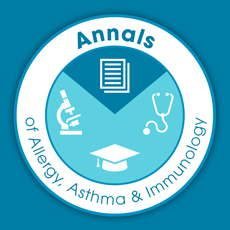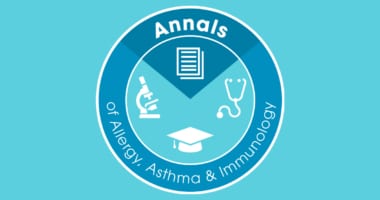 For those reading this who reside in the United States I hope you had a great Fourth of July weekend as we celebrated our great country. For those living elsewhere, I hope your weekend was restful as well. The middle of summer is here in our northern hemisphere bringing hot weather, rain showers (or, in some places drought conditions) and drives many inside for relaxation/recreation. That provides an ideal time to sit with your favorite beverage and peruse the pages of the July Annals of Allergy, Asthma and Immunology. This month’s issue has an emphasis on drug allergy – evaluation and approaches to management. The editorial by Mariana Castells MD, PhD, FACAAI outlines the issues related to labeling patients as drug allergic – implying an IgE-mediated basis. Dr. Castells emphasizes allergists-immunologists can and should be at the forefront to delabel when possible and appropriate. We have a selection of articles that provide timely updates for our understanding of drug allergy with approach to diagnosis and management.
For those reading this who reside in the United States I hope you had a great Fourth of July weekend as we celebrated our great country. For those living elsewhere, I hope your weekend was restful as well. The middle of summer is here in our northern hemisphere bringing hot weather, rain showers (or, in some places drought conditions) and drives many inside for relaxation/recreation. That provides an ideal time to sit with your favorite beverage and peruse the pages of the July Annals of Allergy, Asthma and Immunology. This month’s issue has an emphasis on drug allergy – evaluation and approaches to management. The editorial by Mariana Castells MD, PhD, FACAAI outlines the issues related to labeling patients as drug allergic – implying an IgE-mediated basis. Dr. Castells emphasizes allergists-immunologists can and should be at the forefront to delabel when possible and appropriate. We have a selection of articles that provide timely updates for our understanding of drug allergy with approach to diagnosis and management.
A couple of our review articles merit your attention as they deal with this subject. The first, by David Sloane, MD’s, group from Boston, describes the literature evidence for reported hypersensitivity reactions in patients with malignancies or chronic inflammatory diseases receiving monoclonal antibody-based therapies. They report the diversity of Gell and Coombs-based hypersensitivity mechanisms responsible for these reactions which is largely based upon medical history since confirmatory testing is highly limited. The therapeutic approach including avoidance and drug desensitization are also discussed.
Another article relevant to the drug allergy theme is by Kim Blumenthal, MD’s group, also from Boston, who describe the approaches to using acute care beta-lactam antibiotics as antibiotic stewardship tools. They report these acute care pathways can use allergy history with or without concomitant allergy procedures such as drug challenges and/or skin testing (particularly for penicillin). This allows the development of multidisciplinary, coordinated efforts to safely increase the use of more narrow and appropriate antibiotics (and in the future, other drugs) thus achieving the goals of drug stewardship programs.
I hope you will enjoy this and other features of this month’s Annals. As always, your feedback is always welcome.
Gailen D. Marshall, Jr., MD PhD FACAAI
Editor-in-chief

